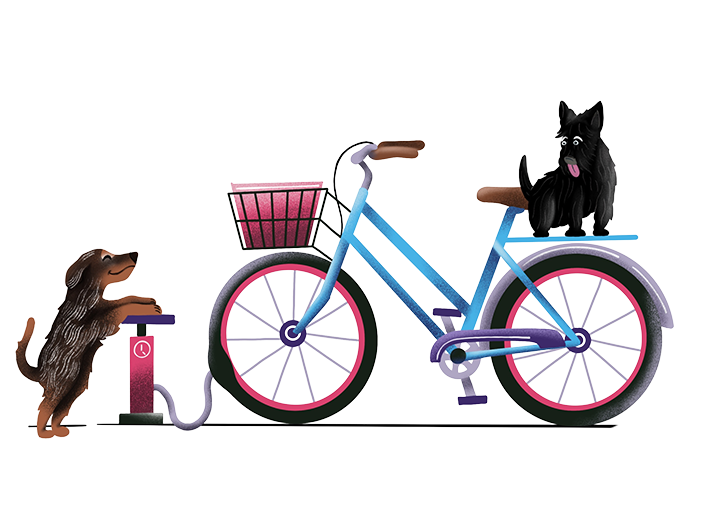Menu

Let’s say you’re a startup that already has a content marketing strategy in place -- awesome. The problem? For one reason or another, nothing seems to be clicking.
First of all, kudos -- as a small business trying to grow, content marketing is essential to building up your brand and the community that will support it. Secondly, content marketing is tough. You could be ticking off everything on your content management to-do list and even then, everything can still go wrong.
So how can you maximize your content solutions enough to bring value to your startup? You have to take your content marketing to the next level. But what’s the next level? Strategic content marketing isn’t limited to churning out content day in and day out. You need to spend more time thinking about making content you can leverage to support your end goals and give you an ROI.
Let’s talk about what that means.
If you look up “content marketing mistakes” on any search engine, you’ll probably stumble upon hundreds of different examples. After all, no two businesses are alike and every organization has their own experience with content management. Still, there is value to learn from the trial-and-error of others.
Mid-sized and small brands risk losing money, resources, and even customers due to a poorly executed content marketing campaign. As a startup, you don’t have the luxury of spending money on a bad campaign that established brands do, so you need to learn how to avoid mistakes others have made.
It’s also important to recognize that you could be doing everything well on the technical aspect but the mindset, approach, or concepts you apply to your strategy aren’t working for you. Here, we’ll take a look at where you could go wrong with the way you think about your content:
As the saying goes, “failing to plan is planning to fail.” This is true especially with content marketing. Without an end-goal in mind, you could be developing a content plan that leads to nowhere, wasting precious time and resources.
A specific, clear goal will help you figure out the type of content you want to create and the audience you want to reach. Ask yourself what you want your readers to do. It could be simple things like:
Even if every piece of content you create is part of a larger strategy, individual content should have its own goals as well. When you plan an intended action before creating your content, your audience will be more likely to take that action. It doesn’t mean that every viewer will take that action but it will support your overall long-term goals.
Setting goals for your content also means you know what you want to accomplish, making it easier for you to measure success. You can track your performance, adjust the content to your audience, and build a stronger following for your brand.
Do you genuinely know who your target customers are? If not, you might be producing irrelevant content - and unnecessary noise - online. You could be the best writer and have the best topics, but it’s useless if you’re not reaching the right people.
Knowing who your target is means you never miss the mark. Create a customer profile of your ideal client. You’ll become more familiar with different customer types as you encounter more people with your startup. Not only will customer profiles help you in content marketing, but it will align every other department to focus on the right audience.
You would be able to attract more traffic when you produce content that is valuable for the audience you want to target. It becomes easier to figure out what content they need, organize keywords based on their search terms, and write in a way that is interesting for them. By knowing who you want to attract, you are sure to generate content that is genuine, informative, and engaging to them.
Sure, you have an editorial calendar and a plan for promoting content - but do you have a real appreciation of what content can do? Some signs you are not as invested in your content as you should be include:
It’s a big problem if you’re just posting content for the sake of it.
Content marketing has the capability to introduce your brand to the right audience and slowly draw them in, but a lot of businesses underestimate the effort needed to develop good content.
You have to research, outline, draft, edit, illustrate, then publish - and your work is only half done by then. You also need to distribute and promote your content across channels then track content performance to see what can be improved. Another challenge is keeping up with trends and continually trying to meet your audience’s needs. These are some of the reasons why other organizations simply opt for outsourced content production.
If you’re committed to your business, you should also be committed to putting in the effort to product content that is valuable. Remember, the philosophy of content marketing is to give more than you take.
Successful content is defined by marketers as content that has achieved the goals it wants to achieve.
Organizations have marketing strategies tied up with their own business objectives so there is no one-size-fits-all measurement of content success. Every business has its own key performance indicators (KPIs) to tell them whether or not their content is doing what it needs to do.
It could be a number of things, such as:
To achieve these KPIs, however, you have to create quality content -- the kind of content that nurtures your relationship with customers or conveys the message of your brand. The format and intent of your content will have different effects on your audience (and your business goals). But before you begin anything, you have to recognize the purpose of your content.
According to Google Squared, there are four main purposes of content: to entertain, educate, inspire, or convince.
Another concept you may want to employ for your content is “reverse engineering”. The goal of reverse engineering is to draw inspiration from what is already trending in order to create a piece of (potentially) viral content.
The first way to reverse engineer content is to check the trends on search engine pages and social media, then connect it to your startup. For example, you are a startup music streaming platform and you notice that the TV show Keeping Up With The Kardashians is trending.
You could write an article that dedicates a playlist corresponding to each member of the Kardashian family, based on what happened to them during the episode. It’s an easy way to create relevant content for people who want updates about the show.
Another way to do reverse engineering is to look up articles that are doing really well on sites like Reddit. You can check on which articles have the most upvotes, identify what made them successful, then figure out how you can adapt your content. Of course, this doesn’t mean you should plagiarize. Rather, you can use those articles to guide you on content creation and increase the chances of your articles going viral.
Maybe you have the content creation down pat already but are lost as to how to maximize content. After all, you’re spending so much time and resources on content creation. Surely, content can offer more to help you grow your startup?
Of course there are more benefits. Depending on your perspective and creativity, the content you create has pretty much unlimited potential. Here are three ways you can utilize great content to positively impact your brand beyond website traffic and social media shares:
Have you ever wondered why some businesses do better than others, even if their products are more or less the same? Think of Coca-Cola versus Pepsi. A lot of people tend to go for Coca-Cola because of its cheerful brand personality that promotes connection and belongingness. Coca-Cola has cultivated this through their content, like the Share A Coke campaign.
Think of your content as an avenue to show your audience who you are and what you can do.
Communities are the foundation supporting large brands. These are the people who are invested in the lifestyle the brand is selling - not just the products. Content is the key to convincing people of that lifestyle. Perhaps you’re a startup selling high-end kitchen essentials and you want to tap into a community of foodies.
You can post recipes and answer questions about cooking. Maybe you would also have a budget to collaborate with chef vloggers and influencers who can promote your products. From these interactions, you would gain a following and establish a relationship with your audience.
People tend to dislike it when a brand is trying too hard to sell them something, which is why invisible marketing is the most effective marketing strategy.
Think about KitKat’s most famous tagline: “Have A Break, Have A KitKat”. It doesn’t explicitly tell you to go buy chocolate. Rather, it wants you to associate break times with breaking up a KitKat bar. It’s a subtle way of getting people to remember your brand.
Invisible marketing usually happens when you help people for free. This works for many customers because they don’t feel like you’re trying to push them into buying anything. Answering industry questions on forums, building fun quizzes, or launching a free resource are some content types that promote invisible marketing.
This way, you establish a relationship with people who likely need your product or service. They become familiar with your startup and recognize you as a brand that cares. From there, they’re on their way to becoming a customer and potential brand advocate.
Every startup must have a great solution to offer the world and a fantastic story to go along with it. With quality content, you bring both the solution and the story into something your audience will actually appreciate. The bonus? You put your brand in the spotlight with no added expense.
